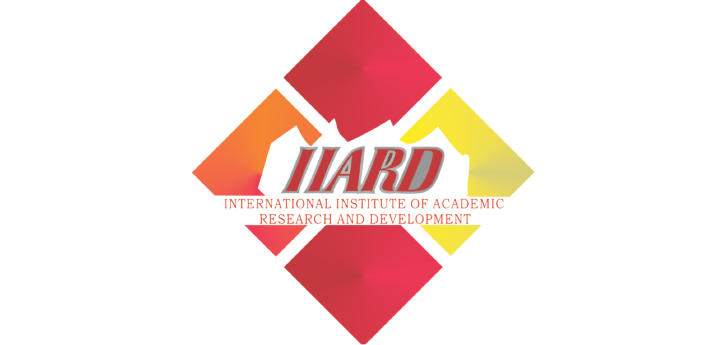Teaching Strategies and Learning Outcomes in Deaf Children: A Comprehensive Review of Inclusive Educational Practices
Francesca Latino, Generoso Romano, Francesco Tafuri
Abstract
Deafness in childhood presents unique challenges and opportunities for educational practice, requiring specialized didactic approaches that recognize the diverse communication needs and learning styles of deaf children. Approximately 466 million people worldwide experience disabling hearing loss, with a significant number of cases occurring in early childhood, a critical period for language acquisition and cognitive development (World Health Organization, 2021). Early intervention and tailored educational strategies are essential to support the academic and social development of deaf learners, whose needs differ markedly from those of their hearing peers. Traditional oralist methods, which emphasize speech and lip-reading, have historically dominated deaf education but have faced criticism for their limited effectiveness and exclusion of natural sign languages. In contrast, bilingual-bicultural approaches that integrate sign language alongside spoken/written language have gained prominence for fostering linguistic competence and cultural identity among deaf children (Marschark & Hauser, 2012). Furthermore, the incorporation of visual learning tools, assistive technologies such as cochlear implants and hearing aids, and inclusive pedagogies tailored to individual needs has transformed educational possibilities. Despite these advancements, challenges remain in ensuring equitable access to quality education for deaf children, including disparities in teacher preparation, resource availability, and societal attitudes toward deafness. This review aims to synthesize current knowledge on didactic methods for deaf children, examining communication modalities, teaching innovations, empirical outcomes, and persistent barriers. By analyzing existing literature, the review seeks to inform educators, policymakers, and researchers on best practices and future directions to optimize learning experiences and outcomes for deaf children withi
Keywords
References
Bat-Chava, Y., Martin, D., & Kosciw, J. (2005). Social and emotional adjustment of deaf
adolescents: The impact of stigma and communication mode. Journal of Deaf Studies
and Deaf Education, 10(1), 33β44. https://doi.org/10.1093/deafed/eni004
Cawthon, S., & Leppo, R. (2013). Online support for teachers of deaf students: Challenges and
opportunities.
Journal
of
Special
Education
Technology,
28(1),
1β12.
https://doi.org/10.1177/016264341302800101
Easterbrooks, S. R., & Baker, S. (2002). The use of assistive technology with deaf and hard-
of-hearing students: Access to the curriculum. American Annals of the Deaf, 147(5),
22β28. https://doi.org/10.1353/aad.2012.0337
Humphries, T., et al. (2016). Deaf children's language rights and educational opportunities: A
global perspective. Journal of Deaf Studies and Deaf Education, 21(4), 370β379.
https://doi.org/10.1093/deafed/enw028
Humphries, T., et al. (2016). Deaf children's language rights and educational opportunities: A
global perspective. Journal of Deaf Studies and Deaf Education, 21(4), 370β379.
https://doi.org/10.1093/deafed/enw028
Humphries, T., Kushalnagar, P., Mathur, G., Napoli, D. J., Padden, C., & Rathmann, C. (2016).
Deaf childrenβs language rights and educational opportunities: A global perspective.
Journal
of
Deaf
Studies
and
Deaf
Education,
21(4),
370β379.
https://doi.org/10.1093/deafed/enw028
Humphries, T., Kushalnagar, P., Mathur, G., Napoli, D. J., Padden, C., & Rathmann, C. (2012).
Avoiding linguistic genocide in the United States: The need for linguistically and
culturally appropriate education for deaf children. Harvard Civil Rights-Civil Liberties
Law
Review,
47,
1β43.
https://harvardcrcl.org/wp-
content/uploads/sites/10/2012/01/47_1_Humphries-et-al.pdf
Johnson, R. E., Liddell, S. K., & Erting, C. J. (1989). Unlocking the curriculum: Principles for
achieving access in deaf education. Gallaudet Research Institute.
Kral, A., & OβDonoghue, G. M. (2010). Profound deafness in childhood. New England Journal
of Medicine, 363(15), 1438β1450. https://doi.org/10.1056/NEJMra0911225
Ladd, P. (2003). Understanding Deaf Culture: In Search of Deafhood. Multilingual Matters.
Marschark, M., & Hauser, P. C. (2012). How deaf children learn: What parents and teachers
need to know. Oxford University Press.
Marschark, M., & Spencer, P. E. (2010). The Oxford Handbook of Deaf Studies, Language, and
Education. Oxford University Press.
Marschark, M., Knoors, H., & Harris, M. (2015). Educating deaf learners: Creating a global
evidence base. International Journal of Disability, Development and Education, 62(3),
293β309. https://doi.org/10.1080/1034912X.2015.1052290
McCarty, S., & Swisher, J. D. (2013). Assistive technology for deaf-blind individuals. Journal
of
Visual
Impairment
&
Blindness,
107(5),
381β393.
https://doi.org/10.1177/0145482X1310700505
Napier, J., Leigh, G., & Mainstone, C. (2010). Sign language access and education for deaf
children.
Disability
&
Society,
25(2),
125β138.
https://doi.org/10.1080/09687590903544705
Schick, B., De Villiers, P., & de Villiers, J. (2007). Language and theory of mind: A study of
deaf children. Child Development, 78(2), 376β396. https://doi.org/10.1111/j.1467-
8624.2007.01004.x
Spencer, P. E., & Marschark, M. (2010). Advances in the Spoken Language Development of
Deaf Children. Oxford University Press.
Swanwick, R., & Connaghan, K. (2019). Teacher training for deaf education: Challenges and
future directions. International Journal of Inclusive Education, 23(12), 1272β1286.
https://doi.org/10.1080/13603116.2018.1480213
World Health Organization. (2021). Deafness and hearing loss. https://www.who.int/news-
room/fact-sheets/detail/deafness-and-hearing-loss
Yoshinaga-Itano, C., Coulter, D., & Thomson, V. (2018). The role of early intervention in
optimizing outcomes for deaf children: New research and directions. American Annals
of the Deaf, 163(3), 272β283. https://doi.org/10.1353/aad.2018.0017

